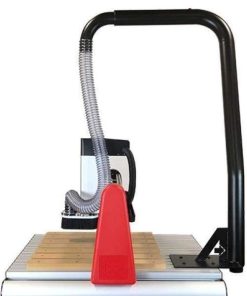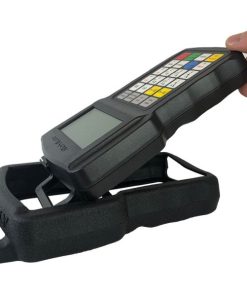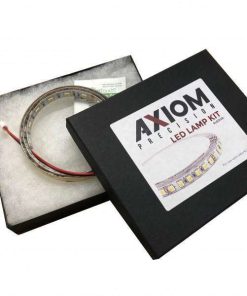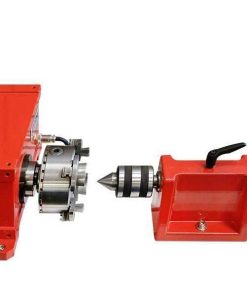AVC100 – Axiom Vectric PhotoVCarve Axiom Precision
$ 149,00 $ 59,60
Vectric PhotoVCarve
PhotoVCarve has been developed to allow CNC machines to carve and engrave in a way that until now could only be done using an expensive laser marking systems.
**Note: This item does not qualify for free shipping. Shipping will be billed separately. Please contact us for an estimate.**
What is PhotoVCarving?
PhotoVCarve instantly converts photographs and images into high quality toolpaths that can be run on virtually all CNC routing and engraving machines.
What can it do?
The ability to permanently CNC machine pictures onto jobs has been a challenge to many machine users and although there are software products that appear to offer the facility, they often fail to deliver in reality.
PhotoVCarve is also perfect for machining 3D Lithophanes directly from photographs, that make perfect gifts, keepsakes and mementos that will last for generations.
The opportunities PhotoVCarve offers are endless and it can be used by all CNC machine users. From the hobbyists who build their own ‘home brew’ tables to professional engravers running high cost industrial machines, the software offers something for everyone.
Features
1. V-Groove Machining
PhotoVCarve creates lines of grooves that vary in width and depth to represent the detail in a photograph or image. The quality of the finished result is very dependant upon a high level of contrast between the material surface and the machined grooves. This information is very important to remember when cutting designs using the PhotoVCarve software.
PhotoVCarve machines dark areas in a photograph with wide groove and the lighter areas to have narrower ones. The software automatically calculates the toolpaths based on the cutter selected and maximum depth of groove required.
This diagram shows how the machined grooves get wider over the dark areas of the eye.
2. 3D Lithophane Machining
Lithophanes are 3D photographs that when viewed in normal lighting look a little dull and lifeless. But when back lit transform into stunning 3D pictures with depth and detail that cannot be seen in a flat 2D photograph.
Lithophanes originate from a process developed back in the mid 1800’s for mass producing 3D pictures in porcelain. A 3D design was hand engraved into a thin sheet of bees wax that was placed over a lighted candle to show the effect of light passing through the wax. This master design was then used to make a mold for casting designs in porcelain. Varying levels of light to pass through the porcelain depending upon the thickness
3. 3D Grayscale Machining
PhotoVCarve automatically converts a grayscale image into a 3D height map that can then be carved.
The example below shows how the grayscale image for a 3D model can be converted to a 3D height map and machined using a Ball nose cutter
Professional packing and fast shipping
Due to our longstanding partnership with UPS FedEx DHL and other major global carriers, we are able provide a range of shipping options. Our warehouse staff is highly trained to package your goods exactly as per the specifications we offer. Before shipping the goods are carefully inspected and secured. Everyday we deliver thousands of packages to customers from all over the world. This is a testament to our commitment to be the largest online retailer worldwide. The warehouses and centers for distribution are situated in Europe and the USA.
Orders with more than one item are given processing time for each item.
Before shipping, we will conduct a thorough inspection of the items you've ordered. Currently, most orders are shipped within 48-hours. Expected delivery time is between 3 and 7 days.
Returns
The stock is dynamic and we do not fully manage it because of the fact that multiple stakeholders are involved, including our factory and warehouse. The actual levels of stock can change at any moment. It's possible that the stock may run out after your order has been placed.
The policy is 30 days. If you haven't received the product within 30 days, we are not able to issue a refund or an exchange.
For your item to be returned, it must be unopened and in the same state as you received it in. It must also be in the original packaging.
Related products
3D Printer Accessories
3D Printer Accessories
3D Printer Accessories
CNC Accessories
3D Printer Accessories
CNC Accessories
CNC Accessories
CNC Accessories
ARS400 – Axiom Stand 4 for AR4 Basic or AR4 Pro Axiom Precision
CNC Accessories
3D Printer Parts
CNC Accessories
3D Printer Accessories
3D Printer Accessories
.4MM drill cleaning tool for 3D nozzle cleaning Wanhao Precision Casting Co., Limited
3D Printer Accessories
3D Printer Parts
3D Printer Accessories
CNC Accessories
CNC Accessories
3D Printer Accessories
BlazeCut T-Series Fire Suppression for Devices: T100E BlazeCutUSA
3D Printer Accessories
3D Printer Parts
Laser Cutter Accessories
4-in-one Rotary Attachment for D1 + Risers (8 pack) Maker Works Technology Inc.
3D Printer Accessories
3D Printer Accessories
3D Scanner Accessories
3D Printer Parts
3D Printer Parts
3D Printer Accessories
3D Printer Accessories
3D Printer Parts
CNC Accessories
CNC Accessories
ARS800 – Axiom Stand 8 for AR8 Basic and AR8 Pro Axiom Precision

























































